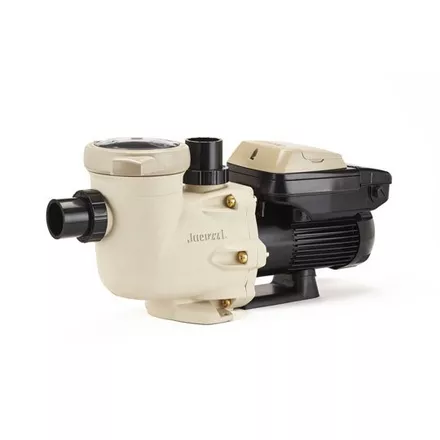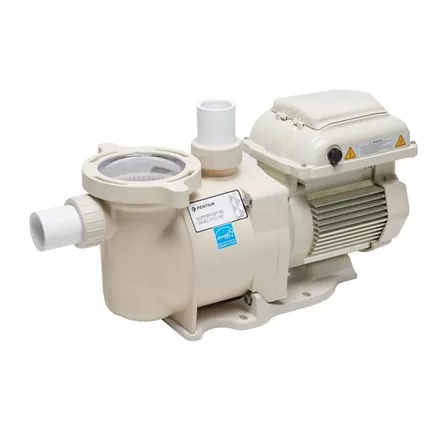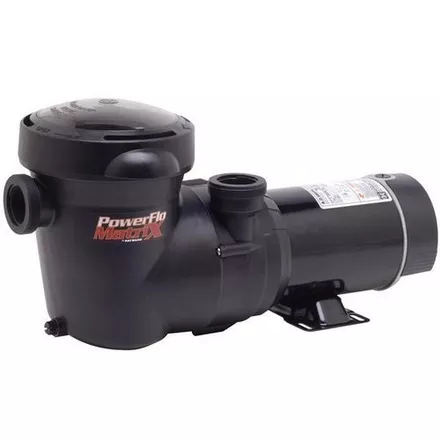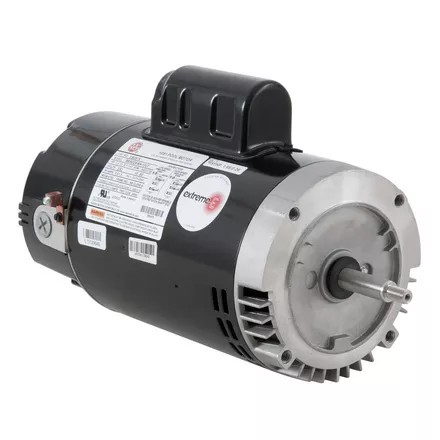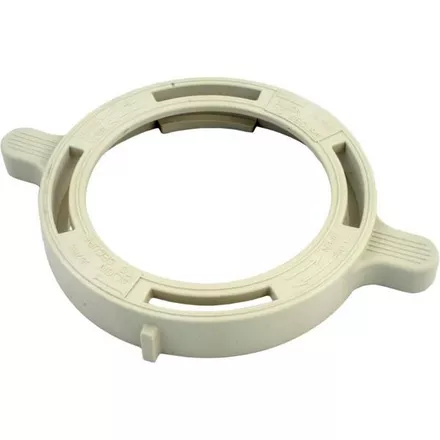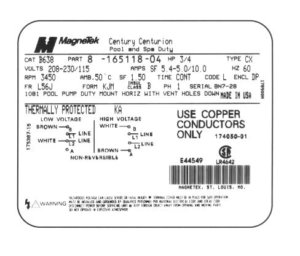
The pool pump motor nameplate – all the information that’s fit to print, on a tiny, metallic label. If you can still read yours, it’s chock full of necessary information when it comes time to replace your pump motor.
The nameplate does have some bits of information that can be less than useable. So, if you call us up with the PART or the SERIAL numbers shown on the left, we may be less than helpful.
The other bits of information are quite useful – Horsepower, Service Factor, Voltage, Frame Type, etc. Let’s take a look at these values, and what they should mean to you.
 56Y/48Y FRAME “SQUARE FLANGE” |  56J FRAME “C” FLANGE |  56C FRAME KEYED SHAFT |  48 FRAME |
1. FR – FRAME TYPE. The value listed next to “FR” will refer to the type of Frame, or specifically the Flange Type. The Flange is on the “Wet End” of the motor, or the end that attaches to the pump. Most styles have a circular face, called a “C” Flange, and one very popular frame type, the 56Y/48Y, is known as the “Square” Flange. The Keyed shaft motor is used on older bronze motors, along with a stub shaft to shim the impeller. Aboveground pools use the 48 Frame type almost exclusively, notable by it’s small size and built in “legs”.
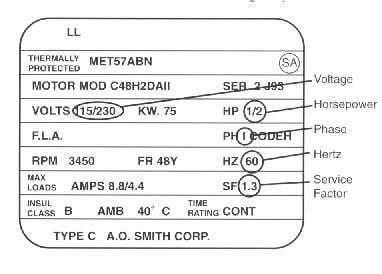
2. HP – HORSEPOWER. This value refers to the amount of work capable by the motor. All motors spin at the same speed, 3450 RPM, but the higher the horsepower, the greater the volume of water that will be pumped. In America, we have a V-8 mentality, and many of our customers install a pump that is too large for the pool or the filter. If you do have a valid reason to increase the horsepower, make sure your filter can handle the flow rate. You also will need to change the impeller to one that is rated for the higher horsepower. The horsepower of your pool pump is also dependent on the Service Factor (SF) described below.
3. SF – Service Factor. This is a bit complicated to express eloquently, but let’s give it a try. About 20 years ago, motor manufacturers began producing “Up-Rated Motors”. By increasing the ServIce Factor of a particular motor, they are able to get more work out of a smaller horsepower motor. By multiplying the HP x SF, you will get the true horsepower of a motor. For example, in the motor nameplate on the right, when we multiply .50 horsepower by 1.3 SF, we obtain the what’s called the Total Brake Horsepower of 0.65 HP.
When considering a new motor, definately match the frame type and HP. You will be able to buy an uprated motor (also called Max Rated by Hayward) for a cheaper cost than a full rated motor, and also enjoy some electrical savings. Just be sure that HPxSF of the new motor is equal to or greater than HPxSF of your existing motor.
4. VOLTS: 115/230 tells us that this motor is “reversible”. It will come wired, from the factory, to accept 230 volts, and if you want to use only 115 volts, you can easily “reverse” the voltage. See the Low Voltage – High Voltage diagram on the upper nameplate, and consult the instructions with a new motor to switch voltages. Some smaller motors are 115 only and some larger motors are 230 only. If you aren’t sure, or the nameplate is no longer readable, you can test the power at the motor, timeclock or breaker with a multi-meter. A 230 volt breaker will also have 2 wires (legs) from the pump attached to the circuit breaker, whereas a 115 volt install will have one wire going to the breaker and one leg going to the neutral buss bar.
5. AMPS – Indicated by two numbers, i.e. 8.8/4.4, this tells you the amperage draw of the motor connected to 115V (8.8) and 230 Volts (4.4). Amp draw is what you pay for on your electrical bill. The smaller this number the better.
6. HZ – Hertz, is a frequency measurement, in cycles per second. In the US, all pump motors will be 60HZ or 60 cycles per second. Many other parts of the world operate on 50HZ. These two are not compatible. A 50HZ motor will not work with US voltages.
7. PH – Phase. This indicates whether the motor operates on Single Phase current or 3-Phase current. Most residential electrical service is single phase, while many larger commercial pumps (10-15hp) will operate on a 3-Phase current. This allows large motors to have a more evenly distributed alternating current. Without “3 Phases” of power, power hungry commercial pool pumps would draw more power than is available.
8. AMB – Ambient Temperature, or the highest allowable outside temperature that this motor should be operating in. This is usually listed at 50 degrees celcius. (about 122 degrees Fahrenheit). Maybe a concern if your pool is in Death Valley, Ca.
9. ENCL – This refers to the openings or lack of openings in the shell of the motor. Swimming pool motors are classified as “Open” and “Drip-Proof”. It’s important to keep the motor vents free of mulch, leaves and dirt, to allow the internal motor fan to keep things cool.
10. TIME – This indicates the running schedule for a particular motor. Pool motors are listed as “Continuous Duty”, sometimes abbreviated as “CONT” – which means they are built for 24/7 operation. You should be able to operate the pool pump motor only 10-15 hours daily – and still maintain water clarity.


